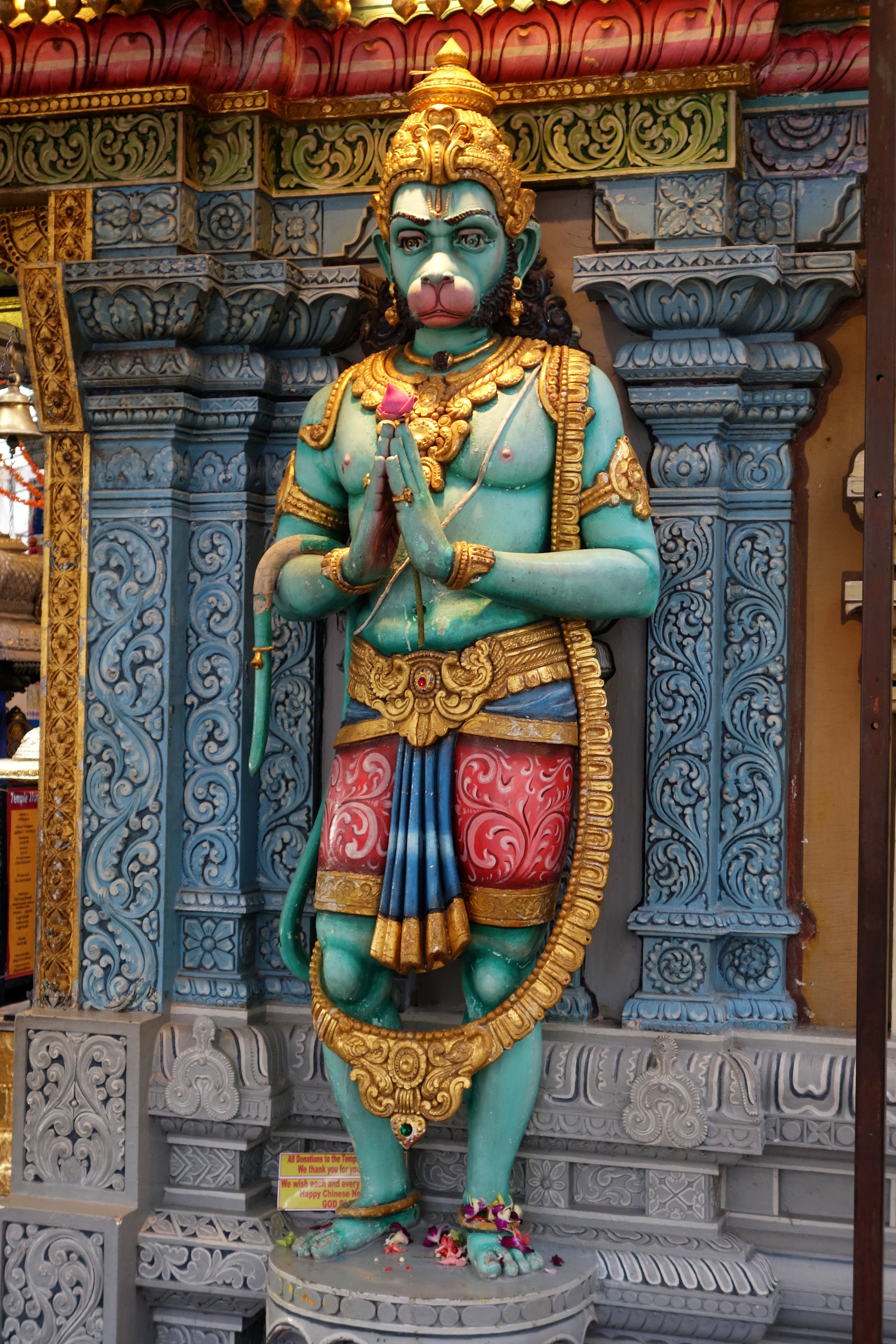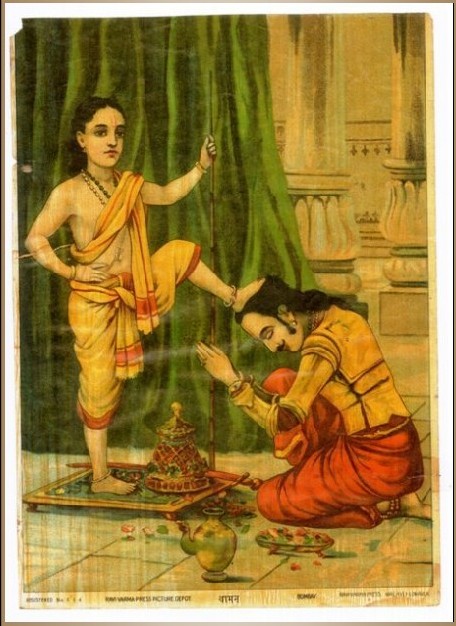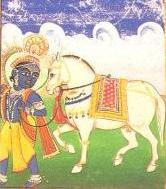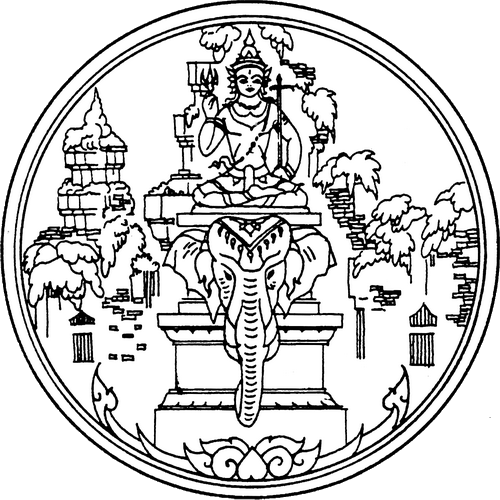|
Chiranjivi
The Chiranjivi (; ) are a group of immortals who are believed to remain alive on Earth until the end of the current age known as the Kali Yuga, according to Hindu literature. Etymology and scriptural context The term is a combination of ''chiram'', or 'permanent', and ''jīvi'', or 'lived'. It is similar to ''amaratva'', which refers to true immortality. At the end of the last manvantara (age of Manu), an asura named Hayagriva attempted to become immortal by swallowing the sacred pages of the ''Vedas'', as they escaped from the mouth of Brahma. The scripture was retrieved by the first avatar of Vishnu (Matsya). Other incarnations of Vishnu (Narasimha and Rama) also later fought and killed Hiranyakashipu and Ravana, both of whom tried to become immortal through obeisance to Brahma and Shiva, respectively. In one sense, immortal can mean "to live eternally until the destruction of universes", i.e., all physical bodies are foretold to become immaterial at the end of time, alon ... [...More Info...] [...Related Items...] OR: [Wikipedia] [Google] [Baidu] |
Mahabali
Mahabali (IAST: Mahābalī), also known as Bali, Indrasenan, or Māveli, is a daitya king featured in Hinduism. He is the grandson of Prahlada, and a descendant of the sage Kashyapa. There are many versions of his legend in ancient texts such as the '' Shatapatha Brahmana'', ''Ramayana'', ''Mahabharata'', and several ''Puranas''. According to Hindu literature, he was blessed to be one of the Chiranjivi, a group of seven immortals, by the Vamana avatar of Vishnu and reigns in the Sutaloka. It is believed that Mahabali will become the King of Svarga (heaven) in the next '' yuga''. In Kerala, Mahabali is considered to be the noblest and most prosperous ruler, who transformed his kingdom into a heavenly place. His legend is a major part of the annual festival Onam in the state of Kerala, and it is celebrated in Maharashtra, Karnataka, Gujarat, Telangana, and Andhra Pradesh as Balipratipada, Balipādyami, or Bali pādva (the third day of Deepavali and first day of Kartika ... [...More Info...] [...Related Items...] OR: [Wikipedia] [Google] [Baidu] |
Ashwatthama
Ashvatthama (, , also spelt as Ashwatthama and Ashvatthaman) is a character in the ancient Hindu epic ''Mahabharata''. He is the son of Drona, the royal preceptor to the Kuru princes—the Pandavas and the Kauravas. Ashvatthama is a close companion of Duryodhana, the leader of the Kauravas, and receives military training alongside the Kuru princes under the tutelage of his father. Favoured by his father, Ashvatthama is entrusted with the knowledge of several celestial weapons, including the Narayanastra and the Brahmashirastra. During the Kurukshetra War between the Pandavas and the Kauravas, he fights on the side of the Kauravas and emerges as one of the three surviving warriors from their faction by the war’s conclusion. On the night following the eighteenth day of battle, after the war has formally concluded, Ashvatthama launches a night raid on the Pandava camp. He kills Dhrishtadyumnathe commander-in-chief of the Pandava army, who beheaded Drona during the warand ... [...More Info...] [...Related Items...] OR: [Wikipedia] [Google] [Baidu] |
A Hanuman Sculpture In Singapore
A, or a, is the first letter and the first vowel letter of the Latin alphabet, used in the modern English alphabet, and others worldwide. Its name in English is '' a'' (pronounced ), plural ''aes''. It is similar in shape to the Ancient Greek letter alpha, from which it derives. The uppercase version consists of the two slanting sides of a triangle, crossed in the middle by a horizontal bar. The lowercase version is often written in one of two forms: the double-storey and single-storey . The latter is commonly used in handwriting and fonts based on it, especially fonts intended to be read by children, and is also found in italic type. In English, '' a'' is the indefinite article, with the alternative form ''an''. Name In English, the name of the letter is the ''long A'' sound, pronounced . Its name in most other languages matches the letter's pronunciation in open syllables. History The earliest known ancestor of A is ''aleph''—the first letter of the Phoenician ... [...More Info...] [...Related Items...] OR: [Wikipedia] [Google] [Baidu] |
Hindu Eschatology
Hindu eschatology is linked to the figure of Kalki, or the tenth and last avatar of Vishnu before the age draws to a close, and Harihara simultaneously dissolves and regenerates the universe. The current period is believed by Hindus to be the Kali Yuga, the last of four ''Yuga'' that make up the current age. It started when Krishna left the Earth in 3102 BC or 5125 years from 2025. Each period has seen a progressive decline in morality, to the point that in Kali Yuga quarrel and hypocrisy are norm. In Hinduism, time is cyclic, consisting of cycles or " kalpas". Each '' kalpa'' lasts for 4.32 billion years and is followed by a '' pralaya'' (dissolution) of equal length, which together make a period of one full day and night of Brahma's 100 360-day year lifespan, who lives for 311 trillion, 40 billion years. The cycle of birth, growth, decay, and renewal at the individual level finds its echo in the cosmic order, yet is affected by the vagaries of divine intervention in Vais ... [...More Info...] [...Related Items...] OR: [Wikipedia] [Google] [Baidu] |
Trailokya
Trailokya (; ; , Tibetan: khams gsum; zh, 三界; ) literally means "three worlds".Fischer-Schreiber ''et al.'' (1991), p. 230, entry for "Triloka". Here, synonyms for ''triloka'' include ''trailokya'' and ''traidhātuka''. It can also refer to "three spheres," "three planes of existence," and "three realms". Berzin (2008) renders ''khams-gsum'' (Wylie; Tibetan) and ''tridhatu'' (Sanskrit) as "three planes of existence" and states that it is " metimes called 'the three realms.'" ''Tridhatu'' is a synonym of ''triloka'' where ''dhatu'' may be rendered as "dimension" or "realm" and ''loka'' as "world" or even "planet." Various schemas of three realms (tri- loka) appear in the main Indian religions of Hinduism, Buddhism and Jainism. Hindu cosmology The concept of three worlds has a number of different interpretations in Hindu cosmology. * Traditionally, the three worlds refer to either the earth ( Bhuloka), heaven ( Svarga), and hell ( Naraka), or the earth (Bhuloka), h ... [...More Info...] [...Related Items...] OR: [Wikipedia] [Google] [Baidu] |
Parikshit
Parīkṣit (, ) was a Kuru king who reigned during the Middle Vedic period (12th–9th centuries BCE). Along with his son and successor, Janamejaya, he played a decisive role in the consolidation of the Kuru state, the arrangement of Vedic hymns into collections, and the development of the orthodox srauta ritual, transforming the Kuru realm into the dominant political and cultural center of northern Iron Age India. He also appears as a figure in later legends and traditions. According to the legendary accounts in Mahabharata and the Puranas, he succeeded his granduncle Yudhishthira to the throne of Hastinapur. Introduction "Listen to the good praise of the King belonging to all people, who, (like) a god, is above men, (listen to the praise) of Parikṣit! - 'Parikṣit has just now made us peaceful dwelling; darkness has just now run to its dwelling.' The Kuru householder, preparing (grains) for milling, speaks (thus) with his wife. — 'What shall I bring you, sour milk ... [...More Info...] [...Related Items...] OR: [Wikipedia] [Google] [Baidu] |
Krishna
Krishna (; Sanskrit language, Sanskrit: कृष्ण, ) is a major deity in Hinduism. He is worshipped as the eighth avatar of Vishnu and also as the Supreme God (Hinduism), Supreme God in his own right. He is the god of protection, compassion, tenderness, and love; and is widely revered among Hindu divinities. Krishna's birthday is celebrated every year by Hindus on Krishna Janmashtami according to the lunisolar calendar, lunisolar Hindu calendar, which falls in late August or early September of the Gregorian calendar. The anecdotes and narratives of Krishna's life are generally titled as ''Krishna Līlā''. He is a central figure in the ''Mahabharata'', the ''Bhagavata Purana'', the ''Brahma Vaivarta Purana,'' and the ''Bhagavad Gita'', and is mentioned in many Hindu philosophy, Hindu philosophical, Hindu theology, theological, and Hindu mythology, mythological texts. They portray him in various perspectives: as a god-child, a prankster, a model lover, a divine hero, ... [...More Info...] [...Related Items...] OR: [Wikipedia] [Google] [Baidu] |
Rudra
Rudra (/ ɾud̪ɾə/; ) is a Rigvedic deity associated with Shiva, the wind or storms, Vayu, medicine, and the hunt. One translation of the name is 'the roarer'. In the ''Rigveda'', Rudra is praised as the "mightiest of the mighty". Rudra means "who eradicates problems from their roots". Depending upon the period, the name Rudra can be interpreted as 'the most severe roarer/howler' or 'the most frightening one'. This name appears in the Shiva Sahasranama, and R. K. Sharma notes that it is often used as a name of Shiva in later languages. The " Shri Rudram" hymn from the ''Yajurveda'' is dedicated to Rudra and is important in the Shaivite sect.For an overview of the Śatarudriya see: . In the Prathama Anuvaka of Namakam ( Taittiriya Samhita 4.5), Rudra is revered as Sadasiva (meaning 'mighty Shiva') and Mahadeva. Sadashiva is the Supreme Being, Paramashiva, in the Siddhanta sect of Shaivism. Etymology The etymology of the theonym ''Rudra'' is uncertain.. It is usual ... [...More Info...] [...Related Items...] OR: [Wikipedia] [Google] [Baidu] |
Drona
Droṇa (, ), also referred to as Dronacharya (, ), is a major character of the Hindu epic Mahabharata. In the epic, he serves as the royal preceptor of the Kauravas and the Pandavas. He is one of the primary counsellors and warriors featured in the epic. Drona is the son of the sage Bharadvaja, and a descendant of the sage Angirasa. Despite being master of advanced military arts and the divine weapons known as astras, Drona initially chooses a life of poverty until he is humiliated by his friend Drupada, the king of Panchala. With the help of his students, he captures Drupada and takes away half of the kingdom. Drona serves as the second commander-in-chief of the Kaurava army, from the 11th day to the 15th day. The acharya fails four times in capturing Yudhishthira (the 11th day, 12th day, 14th day, and the 14th night). He was beheaded by Dhrishtadyumna—his student and son of Drupada—when he meditates to release his soul on the battlefield. Etymology Drona's name ... [...More Info...] [...Related Items...] OR: [Wikipedia] [Google] [Baidu] |
Hindu Pantheon
Hindu deities are the gods and goddesses in Hinduism. Deities in Hinduism are as diverse as its traditions, and a Hindu can choose to be polytheistic, pantheistic, monotheistic, monistic, even agnostic, atheistic, or humanist. Julius J. Lipner (2009), Hindus: Their Religious Beliefs and Practices, 2nd edition, Routledge, , p. 8; Quote: "(...) one need not be religious in the minimal sense described to be accepted as a Hindu by Hindus, or describe oneself perfectly validly as Hindu. One may be polytheistic or monotheistic, monistic or pantheistic, even an agnostic, humanist or atheist, and still be considered a Hindu." The terms and epithets for deities within the diverse traditions of Hinduism vary, and include Deva, Devi, Ishvara, Ishvari, Bhagavān and Bhagavati. The deities of Hinduism have evolved from the Vedic era (2nd millennium BCE) through the medieval era (1st millennium CE), regionally within Nepal, Pakistan, India and in Southeast Asia, and across Hinduism' ... [...More Info...] [...Related Items...] OR: [Wikipedia] [Google] [Baidu] |
Mahabharata
The ''Mahābhārata'' ( ; , , ) is one of the two major Sanskrit Indian epic poetry, epics of ancient India revered as Smriti texts in Hinduism, the other being the ''Ramayana, Rāmāyaṇa''. It narrates the events and aftermath of the Kurukshetra War, a war of succession between two groups of princely cousins, the Kauravas and the Pandava, Pāṇḍavas. It also contains Hindu philosophy, philosophical and devotional material, such as a discussion of the four "goals of life" or ''puruṣārtha'' (12.161). Among the principal works and stories in the ''Mahābhārata'' are the ''Bhagavad Gita'', the story of Damayanti, the story of Shakuntala, the story of Pururava and Urvashi, the story of Savitri and Satyavan, the story of Kacha (sage), Kacha and Devayani, the story of Rishyasringa and an Ramopakhyana, abbreviated version of the ''Rāmāyaṇa'', often considered as works in their own right. Traditionally, the authorship of the ''Mahābhārata'' is attributed to Vyasa, Vy ... [...More Info...] [...Related Items...] OR: [Wikipedia] [Google] [Baidu] |
Ramayana
The ''Ramayana'' (; ), also known as ''Valmiki Ramayana'', as traditionally attributed to Valmiki, is a smriti text (also described as a Sanskrit literature, Sanskrit Indian epic poetry, epic) from ancient India, one of the two important epics of Hinduism known as the ''Itihasas'', the other being the ''Mahabharata''. The epic narrates the life of Rama, the seventh ''avatar'' of the Hindu deity Vishnu, who is a prince of Ayodhya (Ramayana), Ayodhya in the kingdom of Kosala. The epic follows Exile of Lord Rama, his fourteen-year exile to the forest urged by his father King Dasharatha, on the request of Rama's stepmother Kaikeyi; his travels across the forests in the Indian subcontinent with his wife Sita and brother Lakshmana; the kidnapping of Sita by Ravana, the king of Lanka, that resulted in bloodbath; and Rama's eventual return to Ayodhya (Ramayana), Ayodhya along with Sita to be crowned as a king amidst jubilation and celebration. Scholarly estimates for the earliest stage ... [...More Info...] [...Related Items...] OR: [Wikipedia] [Google] [Baidu] |









